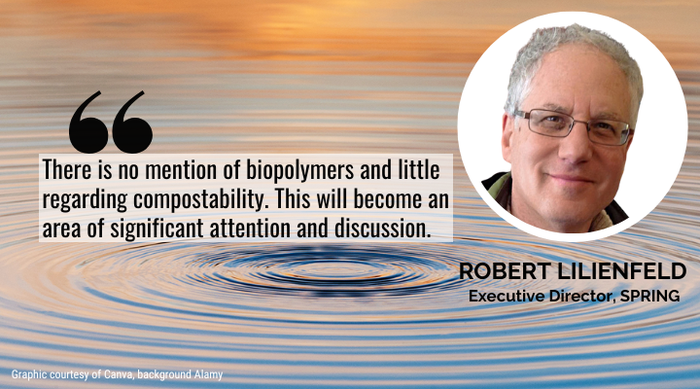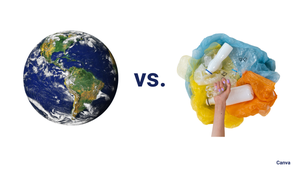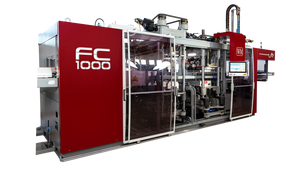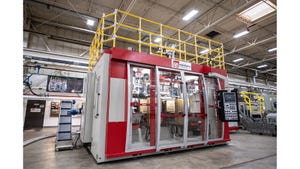How to prepare for the sustainable packaging supply-chain ripple effect of California’s new law, which puts the onus on brand owners and converters.
August 18, 2022

When confronted with the need to change materials, most companies have two worries: Will it cost more? And will it run on my existing machinery?
But thanks to California’s new law, SB 54, the Plastic Pollution Prevention and Packaging Producer Responsibility Act, you better add a few more questions, including:
What will I have to do differently, and by when?
Where will the necessary materials come from and how do I lock-in enough supply to serve my customers?
What investments will I need to make to either keep my current customers, gain new customers, or both?
What exactly is SB 54?
According to an excellent synopsis (California Enacts EPR Law Aimed at Single-Use Plastic Packaging and Food Service Ware) by Jean-Cyril Walker and Alex Pecht of Washington, DC, law firm Keller & Heckman, “The Act establishes an aggressive extended producer responsibility (EPR) program for single-use plastic packaging and plastic single-use food service ware by requiring all covered material sold in or imported into California to be recyclable or compostable by 2032. The Act also requires a 25% reduction in the use of plastic packaging by 2032 and a 65% recycling rate of the remaining single-use plastic packaging by the same year.”
What are the key specifics?
The Act squarely puts the onus on brand owners to reduce non-recyclable single use packaging materials and increase recycling rates to as high as 65%. Why 65%? I have frequently heard diverters such as Waste Management refer to this number as the upper limit for effective and financially efficient recycling activities.
Per the synopsis, the overriding goals per brand owner include the following:
The overall amount of plastic packaging material, including the number of products packaged in such material in California is source reduced by 10% on or before January 1, 2027; 20% by January 1, 2030; and 25% by January 1, 2032.
All (plastic) packaging material is recyclable or compostable with the state by January 1, 2032.
Recycling does not include combustion, incineration, energy generation, fuel production (with limited exception), or other forms of disposal.
The recycling rates for all plastic packaging and foodservice material must meet the specified rate of 65% by January 1, 2032. Interim targets are 30% by January 1, 2028, and 50% by January 1, 2028.

Per my review and interpretation, note the following:
While not completely settled, chemical recycling as generally defined by the industry will not be considered recycling unless materials can be repolymerized for further use in packaging and foodservice applications.
There is no mention of recycled content. It is thus an implied expectation that can skew market dynamics both within and outside California itself.There is no mention of biopolymers and little regarding the definition of compostability. In my view, this will become an area of significant attention and discussion down the road.
What you need to do.
Obviously, your first action should be to immediately assess the size and value of your business in California.
Assuming that business is significant, consider this to be national mandate and work on national solutions.
Work closely with your customers, suppliers, trade associations, and legal advisors to determine which of your products fall into the California specifications today and will qualify to do so over the next 10 years.
Ensure that you have the capability to prove the recyclability of the materials you use by working with the APR, FTC, and state of California.
Act now. Time flies and many of the target dates are right around the corner.
Robert (Bob) Lilienfeld has been involved in sustainable packaging for 25 years, working as a marketing executive, consultant, strategic planner, editor, writer, and communications expert. He’s President of Robert Lilienfeld Consulting, working with materials suppliers, converters, trade associations, retailers, and brand owners. He is Executive Director at SPRING, The Sustainable Packaging Research, Information, and Networking Group. You can also write him at [email protected] or visit his LinkedIn profile.
About the Author(s)
You May Also Like




